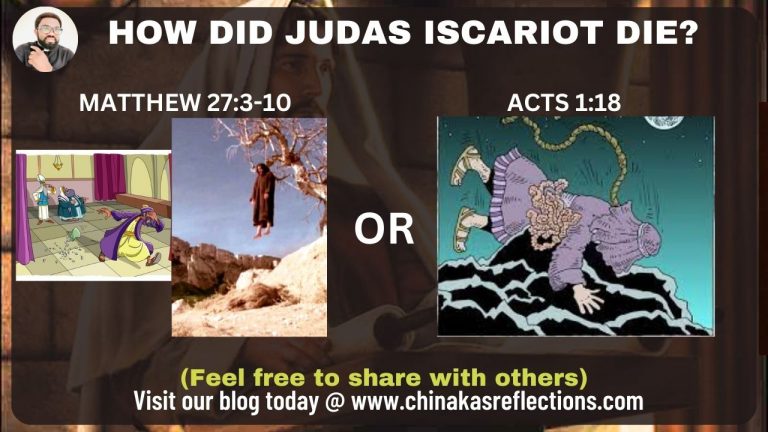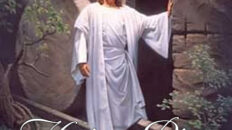RESPONSE:
While Acts 1:18 clearly states that Judas used the money he received to buy a field on which he fell, resulting in a graphic death and his body burst open, exposing his internal organs, Matthew 27:3-10 presents a different perspective. According to Matthew, it was the priests who purchased the field with the money that Judas threw back in remorse. It is clear that both passages above provide us with two different accounts of the death of Judas Iscariot, and reconciling them requires understanding the complementary nature of the narratives. Both passages describe the final fate of Judas but offer distinct details that, when examined together, create a comprehensive picture. Let us then examine the focus and nature of the narratives of Matthew and Acts respectively with regard to Judas’ death.
In Matthew 27:3-10, the focus is on the aftermath of Judas’ betrayal of Jesus. After realizing the gravity of his actions, Judas returns the thirty pieces of silver to the chief priests and elders. The religious authorities reject the money, deeming it tainted by the betrayal of innocent blood, and decide to use it to buy the potter’s field as a burial place for strangers. This event fulfills the prophecy from Jeremiah regarding the thirty pieces of silver (Zechariah 11:12-13), emphasizing the divine plan behind these events. On the other hand, in Acts 1:18, the emphasis is on the tragic end of Judas. Luke, the author of Acts, recounts that Judas used the money he received for betraying Jesus to purchase a field. However, Luke’s account provides more specific details about Judas’ death, stating that he fell headlong, and his body burst open, spilling his intestines. This depiction highlights the graphic and dramatic nature of Judas’ death.
Therefore, to reconcile these accounts, it is pertinent to recognize that the passages present different aspects of the same event. Matthew focuses on the consequences of Judas’ betrayal and how it led to the purchase of the potter’s field, while Acts offers a more detailed description of Judas’ physical death, emphasizing the tragic outcome of his actions. Given this insight, then a reconciliation can be proffered.
First, a good knowledge of Scripture reveals that the ancient Jews have a way of attributing actions or words to individuals who are directly responsible or involved, even if they did not personally perform every aspect of the action or spoke the words directly. So, although Judas may not have physically bought the field, the money was originally his, and his actions ultimately played a significant role in the purchase. This understanding aligns with how a farmer might say he tilled the soil, even though his oxen or tractor were the ones exerting the physical effort.
Second, regarding the specifics of Judas’s death, the narrative in Matthew implies that he hung himself, but the in book of Acts, St. Luke indicates that he fell to his death, leading to the grim outcome of his entrails (internal organs) gushing out. It is pertinent to know that when individuals experience severe falls from a height, it is uncommon for their bodies to burst open and expose their internal organs. The human skin is resilient and can withstand significant force without rupturing, especially in the abdominal region. Therefore, it is highly improbable that Judas met his demise solely from a fall. However, it is worth considering that after hanging himself, the effects of bacterial activity inside his corpse resulting in gradual decomposition made his burst open. Basic biology teaches us that when tissues and cells undergo decomposition, bacteria produce gas as a byproduct of their metabolic processes. This gas exerts pressure on the cells and tissues, causing fluids to be expelled into the body cavities. Consequently, the body becomes distended and bloated. Additionally, the decomposition of tissues weakens the integrity of the skin too. In the case of Judas, his body could be likened to an overinflated balloon. Thus, it could be deduced that he landed on the ground after having hung himself, due to the rope breaking away from the branch, leading to the easy rupturing of his skin and resulting in the spilling out of his internal organs.
In summary, the apparent discrepancy between Acts 1:18 and Matthew 27:3-10 can be understood by first considering the focus and theological insights they convey. A literal understanding does not suffice. Judas’s involvement in the purchase of the field, although indirect, highlights the consequences of his choices. The details of his death remind us of the anguish and devastation caused by his sin, which “would have been better if he had not been born.” (Matt. 26:24)
Shalom!
© Fr. Chinaka Justin Mbaeri, OSJ
Paroquia Nossa Senhora de Loreto, Vila Medeiros, São Paulo, Brazil
nozickcjoe@gmail.com / fadacjay@gmail.com
__________________________
Have you prayed your rosary today?





Makes a lot of sense.